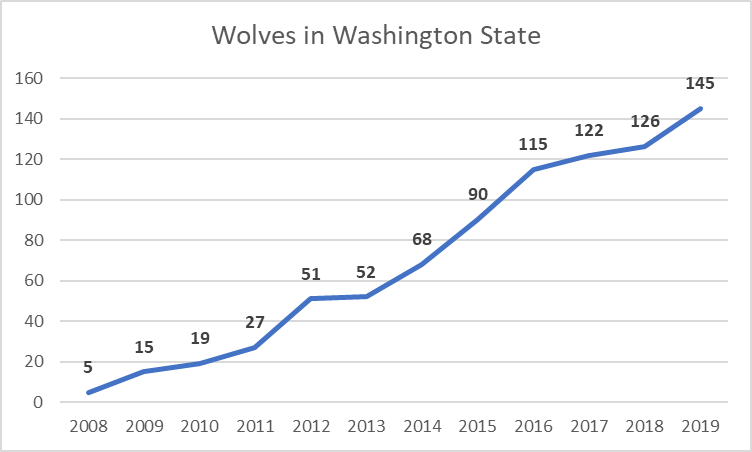The United States Department of Fish and Wildlife announced today that it is removing the gray wolf from the list of endangered species. For the Endangered Species Act, which has a poor record of helping threatened animals recover, this is a significant victory.
 Washington state is a good example of how rapidly wolves have recovered. The population increased from nearly zero a decade ago to nearly 150 this year. Neighboring states also have large and stable populations. Montana saw the population of wolves more than double over the last 15 years. Idaho’s wolf population has remained stable around 800 wolves. The grey wolf had already been federally delisted in both states and in the eastern third of Washington state.
Washington state is a good example of how rapidly wolves have recovered. The population increased from nearly zero a decade ago to nearly 150 this year. Neighboring states also have large and stable populations. Montana saw the population of wolves more than double over the last 15 years. Idaho’s wolf population has remained stable around 800 wolves. The grey wolf had already been federally delisted in both states and in the eastern third of Washington state.
As Cody Desautel, the natural resource director for the Confederated Tribes of the Colville Reservation explained in this video, they consider wolves recovered and manage their population, in part, with an open hunting season for tribal members.
Earlier this year, in conjunction with PERC, we released a report on wolf management in Washington state with recommendations on how to protect wolves while addressing the impacts of wolves on ranchers and livestock. Amongst the recommendations:
- Increase the size and timeliness of payments to ranchers for lost livestock. Washington pays less than neighboring states and even under a generous reimbursement system like that in Wyoming would cost only $53,000 a year.
- Increase funding for range riding and other efforts that prevent wolf attacks on livestock. There has been an increase in state funding recently and it should continue to be a priority.
- Rapidly remove problem packs. Despite complaints that the state Department of Fish and Wildlife is killing too many problem wolves, the statewide population has continued to increase rapidly. Only a few wolf packs are responsible for attacks on livestock and removing those problem wolves can dramatically reduce wolf attacks without harming the overall population.
The delisting is good news and reflects the rapidly growing populations in Washington state and across the West. Washington state elected officials should take this opportunity to prepare for a post-recovery strategy that learns from the success of neighboring states and local tribes.



